MO Tested: Alpinestars Supertech R10 Helmet Review

Finally, Alpinestars’ full-face road helmet is here – and it’s impressive
Head-to-toe protection is the dream of any motorcycle apparel company. Which is why this moment is especially poignant for Alpinestars. One of, if not the, leading apparel manufacturers, it’s been a little ironic that Alpinestars has had the rider protected from neck-to-toe for over two decades. Finally, however, the company that started making protection for rider’s feet back in 1963 has finally released its crown jewel (almost literally) – introducing the Alpinestars Supertech R10 full face helmet.
Alpinestars Supertech R10 Helmet
Alpinestars' long-awaited full-face helmet is finally here, and you can tell the team did their homework.
Editor Score: 86.5%
Comfort/Fit | 9/10 | Value | 5/10 | Innovation | 9/10 |
Protection | 9/10 | Aesthetics | 9/10 | Weight | 8.5/10 |
Construction | 9/10 | Options | 9/10 | Weather Sutability | 9/10 |
Desirability | 10/10 | ||||
Highs
- Incredibly stable
- Ventilation you can actually feel
- Weighs less than many of its rivals
Sighs
- The shield latch can be hard to operate with gloved hands
- Shield changes could be more intuitive
- Launch Edition only available to 200 lucky people
The SR10 helmet has been a long time in the making – more than 10 years, actually – but it’s not like the company was sitting idle. Not at all. In that time, Alpinestars has concurrently been developing the revolutionary Tech-Air airbag system as well as the Supertech M10 motocross helmet (not to mention the myriad of other products like jackets, gloves, and boots that constantly need updating).
But introducing a full-face street helmet is a different beast. Protecting the dome is a delicate subject in its own right, and with the reputation that it has, if Alpinestars were to come out with a full face street helmet, it had to be cutting edge. Status quo simply wouldn’t do.
The Five Pillars
At its core, Alpinestars is a racing company. So it is no surprise the SR10 is developed by racers, for racers, whether your racetrack is real or imaginary. In its development, there were five pillars of development that went into the SR10: Protection, Aerodynamics, Vision, Ventilation, and Weight.
Protection
First and foremost, a helmet’s job is to protect the rider’s head. The SR10 is homologated to the ECE 22.06, DOT, and FIM standards with an outer shell constructed from a 3K high-density carbon outer layer that efficiently disperses the impact energy of a fall across the entire shell. Beneath that is a uni-directional carbon composite layer that provides immense radial strength around the shell to prevent compression of the helmet and deflect the energy away from your head. Finally, an aramid fiber/fiberglass layer provides critical protection against penetration from foreign objects getting through the shell.
Speaking of the shell, it’s available in four different sizes to accommodate the six different sizing options available. XS and S helmets use the small shell, the medium and large shells are unique to their respective sizes, and the XL shell is for the XL and XXL sizes. The shell itself is made from your traditional multi-density EPS material, but it features a patented coating to help reduce rotational accelerations – similar in theory to MIPS. In fact, this coating is visible in some parts of the helmet and you can slide the inner liner across it to feel how it moves. According to Alpinestars representatives, incorporating this coating instead of partnering with MIPS reduces the number of internal pieces inside the helmet, simplifying its construction and keeping weight to a minimum.
In its internal impact test comparison, comparing the SR10 average values against the 22.06 ECE threshold, the SR10 helmet recorded 37% less G impact in the linear test and 65% lower impact G in oblique testing compared to the ECE 22.06 standard.
Aerodynamics
The Mugello MotoGP round features the fastest straight on the entire calendar, and in fact Brad Binder set a new trap speed record in the MotoGP class at the 2023 event – 366 kph, or 227 mph. At those speeds, the last thing you want is a helmet that buffets and moves around because it can’t cut through the air cleanly.
Even at normal speeds and on the roads, the rider spends much more of their time not in a tuck, whether that’s sitting upright or moving one’s head from one side to the other. And riders of naked bikes without any wind protection at all will also appreciate the stability of an aerodynamic helmet. Less, or no, buffeting results in a more comfortable ride with an added bonus of not shaking your eyes, so you can see through corners easier.
With the SR10 helmet, significant time was spent in full-scale wind tunnels to produce the cleanest aerodynamic shape possible. Obviously stability in a straight line was a priority, but the helmet also had to be stable when turning your head in either direction. Alpinestars believes this helmet shape achieves that.
When looking at the helmet in these pictures, you’ll see the large race spoiler at the rear of the helmet. It’s optimized for use with the back hump on leathers and produces the cleanest, most stable path for air to flow from front to back. But if that huge spoiler isn’t for you, there’s a shorter street version, too. Both spoilers feature a patented release system also used with the SM10 motocross helmet, with elastic joints to allow it to separate from the helmet in the event of a big crash.
However, to really help the helmet flow cleanly through the air, the faceshield has turbulators on the edges of the upper rim. What’s more, a feature that’s special to the SR10 helmet are the side winglets on each side. These add a great deal of stability, especially for side-to-side movements. In fact, Alpinestars says the SR10 reduces drag by 4.54% when compared to a standard SR10 without a race spoiler, winglets, or turbulators.
Vision
News flash: it’s important to see on a motorcycle. What might not be so obvious is how different eye ports can affect how much you can see. When you’re riding normally and looking straight ahead, any helmet’s eye port will have enough of an opening to see what you need to see. But what if you’re in a tuck and/or trying to see either side of you through your periphery? This is when the importance of a wide eye port becomes apparent.
The SR10 eyeport gives you 220º of lateral vision and 57º vertical vision. More than that, the square cutout at the edges of the eyeport provide a tiny bit more of an opening to see to the extremes of your peripheral vision. And while 57º of vertical vision is a lot, it still may not be enough to see clearly if you’re in a tuck. For this, Alpinestars has pioneered a clever system called A-Head, allowing the wearer to fine-tune not only the height of the helmet on their head, but also the angle. Four snaps in the crown of the internal EPS liner (one in each corner) are adjustable to three different positions. Simply pull the tab(s), snap them into a new position, and you’re back on your way in minutes. This is handy if you ride different bikes with vastly different riding positions, or if you’re switching from the track or the road and need to adjust from tucked to upright (or vice versa).
The faceshield itself is an ECE 22.06 homologated, optical Class 1 shield measuring 1.6mm on the sides and 2.6mm in the center, offering a little extra protection against debris getting kicked up into your face. And while anti-scratch and anti-fog treatments aren’t topics to gloss over, Alpinestars made a big deal about the anti-fog properties of the shield and the amount of testing it performed in harsh environments, both on track and on the roads, to test the anti-fog capabilities. All of this work came to fruition for Alpinestars MotoGP riders Jorge Martin and Jack Miller at the Argentina round of the season, where rain and inclement weather made it hard for other riders to see through the fog in their helmets. Jack and Jorge both glowed about how this wasn’t a problem for them.
As the SR10 is the highest echelon of Supertech R helmets, it keeps the faceshield in place with the use of aluminum hinges and center lock instead of plastic pieces used on competitor helmets (and future iterations of the Supertech helmet). Alpinestars prioritized the shield staying shut in the event of a crash over saving a few grams by using plastic pieces in this case, hence the use of aluminum. You don’t need tools to remove the shield (though it is a little tricky to put on. More on that later), and the lock is positioned in such a way that it would take a very unique crash, where you’re sliding on your face along a singular plane, for it to come undone.
Ventilation
Air enters and exits the SR10 through a total of 11 ventilation channels throughout the helmet. Three intake ports along the chin, along with four on top, not only move air across your head, but also across the inner portion of the faceshield to further combat fogging. In fact, with the top slider fully open, you can see daylight if you gaze through the bottom of the helmet and look up. Hot and humid air exits from exhaust ports along the chin bar and rear of the SR10.
Weight
Of course, none of the Supertech’s features matter if the helmet weighs a ton and isn’t comfortable. I’ll get into the latter in a minute, but as far as weight goes, the medium SR10 weighs in at 3.4 lbs, or 1,540 grams, putting it slightly lighter than many other flagship race helmets it’s competing against.
Other Notable Features
Aside from the main features of the SR10, inside you’ll also find a fully removable and washable liner with plush, sweat-wicking material. The cheek pads are fitted 3D foam with built-in channels for glasses. There’s also a pocket for communicator speakers and a channel to accommodate a hydration tube (sold separately). The cheek pads also feature the Emergency Extraction System (ERS) for quick removal by medical personnel, if needed. Both a chin curtain and wind deflector are included (though only one can be used at a time), and to help make absolutely sure no fogging occurs, a breath deflector is also included with the helmet.
Finally, one last notable feature is found along the chin bar. It’s a collarbone cutout, similar to what you’ll find with the SM10 motocross helmet. This relief helps reduce the chance of a collarbone injury in a crash in the event the chin bar of the helmet comes in contact with the collarbone. Instead of being met with a hard carbon shell, the soft padding of the interior liner will come into contact with bones.
Track Impressions
To get a feel for the Supertech R10 helmet in its intended environment, Alpinestars brought us out to the Vairano test track in northern Italy. We would use its handling course to experience the overall feel of the helmet, including its wide eye port, and then also try the full configuration – including the 1km straight – to experience the SR10’s high-speed stability.
However, before ever throwing a leg over a bike, my first taste of the helmet gave all the signs of a premium helmet. Donning a size medium, it was immediately noticeable how comfortable the liner was. The crown shape fit well with my intermediate-oval head, too. Standard cheekpad thickness for the medium helmet is 30mm, and though it felt snug, I opted to replace the standard pads for optional 35mm cheekpads. The resulting fit made the helmet really hard to take on and off, and I looked like a chipmunk, but once it was on my head it was absolutely perfect. There was zero gap for the helmet to pivot across my cheeks and chin. It was firmly, but comfortably, in place.
The Vairano test track is flat and featureless, with tall grass hiding the edges of the road, making it difficult to find my way around. Being able to scan far ahead to see which direction to go next, as well as use my periphery to take note of the bike’s immediate position relative to the track, would really put the eye port to the test.
Aboard the cramped MV Agusta F3 800 RR, vision was never an issue. I could follow behind the guide riders and note their lines, and once I was let loose to ride alone, the helmet faded away, allowing me to just focus on riding and learning where to go. And though speeds weren’t crazy, I could still reach triple digits in spots. All the while the helmet was planted on my head.
With a small bead of sweat forming, I took the opportunity to open and close the vents, and for once I could actually tell a difference between the two settings. There wasn’t a massive amount of air flowing in with the open setting, but at least I could feel it circulating around my head. The top slider is actually able to open and close in incremental positions, though I opted to either leave it fully open or fully closed.
As we moved to the full track, and I hopped on first a Yamaha R1 kitted with GYTR parts and later a Honda CBR1000RR-R, I was finally able to achieve a full tuck – something the cramped MV Agusta didn’t allow me to do. At this point, it became quickly apparent that I couldn’t see very well through the top of the eyeport. With other helmets I’d simply position the helmet so there’s a large gap between my eyebrows and the top of the eyeport. With the SR10, we adjusted the angle (but not the overall height) of the A-Head system for better vision in a full tuck, and I also placed the helmet on my head with more gap between my eyebrows and eyeport. Unfortunately, the Yamaha was unavailable to try a before and after comparison , and the vision aboard the Honda proved to be a non-issue, as I could see perfectly. However, how much of that was due to the A-Head system, my repositioning of the helmet, the riding position of the Honda, or a combination of the three, is hard to know.
What wasn’t in question was the stability of the SR10 down Vairano’s long straight. With the CBR1000RR-R howling away at the top of fourth gear, my head didn’t move a bit while in a tuck. Popping my head out of the bubble for the braking zone showed more of the same, with the SR10 not budging or buffeting. It’s shockingly stable (get used to reading that word).
Street Impressions
As it turns out, I got plenty of time to try the helmet during regular road riding, as the selected group of journalists and Alpinestars staff traversed back and forth to the Mugello round of MotoGP (I know, send your hate in the comments). In all, we traveled around 400 kilometers (248 miles) in all sorts of conditions – broad daylight, night, at night in the rain, and with a few crosswinds thrown in for good measure. I deliberately picked out the KTM 890 Duke R as my steed specifically because of its lack of wind protection. It quickly turned out to be the perfect choice.
From an aerodynamic standpoint, if a helmet is stable at 150 mph, then 80 mph on the highway is nothing. Yes, this proved to be the case with the SR10, but while I’d only reach 150 mph briefly at Vairano, I was sustaining 80 mph for 30 minutes or more. Wind direction can change over time, and never did I feel any dirty air behind my head jostling me around. Shoulder checks also were rock solid – I’m guessing the side winglets have a part in that. Occasionally, a strong side wind would rock my head a little, but it came and went in a flash. At no point was the helmet buffeting or causing my vision to get shaky. I can’t say the same about some other premium helmets I’ve tried in the past.
As I mentioned, there was a stint where we were hit with rain. It was short, but intense, and through it all, the faceshield never showed a sign of fogging. This despite me deliberately huffing through my mouth to try and get it to fog. Nothing. For those inclined, the SR10 faceshields come with Pinlock posts already installed, should you want to install one for better contrast. It certainly doesn’t need one for fogging reasons.
Negatives
The Supertech R10 is an impressive helmet, but it’s not without its faults. And it’s mostly with the faceshield. Firstly, the faceshield locking mechanism isn’t the most intuitive to use, especially with gloved hands. Reaching for the center instead of the sides like a lot of other helmets is easy enough to adapt to, but there’s a plug in the center air vent, right below the latch. I often found myself reaching for that first before realizing I had to move further up. Once at the latch, the easiest way to open the shield is to push the latch in with the pointer finger before lifting the shield up with your thumb. I know, two steps to lift the shield isn’t a big deal, but other helmets can do it in one.
My other gripe is replacing the shield. Removing it is easy enough, but it’s imperative that the shield is in its uppermost position. From there, pulling the tabs at either end releases the shield. Putting the shield back on requires locating a pin on the shield into a small tab in the shield mechanism. If the shield wasn’t in its uppermost position when you took it off, this tab will not be in the correct position when it comes time to put the shield back on and reinstallation will be impossible. If this happens, a round circular object like a pen can be used to locate the tab and rotate it up into the proper spot. It’s not hard by any means, and it’s certainly easier than replacing an Arai shield. Still, it’s also not as intuitive as other helmets.
And finally, I experienced a weird anomaly wherein the paint lines on the highway would reflect off the inside of the chin bar, distracting the lower portion of my peripheral vision as we were riding. Blocking my chin with my hand would make the reflections go away. I’ve never experienced something like that before, and your mileage will vary based on a number of factors. But it was still strange enough to document.
Ready To Launch
This particular helmet you see here is the Launch Edition helmet. Limited to 200 units, it comes in premium dark candy red sublimated by vibrant red accents, carbon glossy colorway, where dark candy red ink has been incorporated in the clear coating and manually sprayed on the carbon helmet to create a unique grading effect. It truly does look stunning in person. It will be available only in the European and US markets starting July 10 at 6pm CET (that's 9am PST/12pm EST for those in the US). Final pricing hasn’t been announced as of press time, but expect it to be in the $1000 range.
If that’s a little steep for you, or you missed out on the 200 units, standard production versions of the SR10 will be released in various graphics in 2024, and it’s not unreasonable to expect SR7, SR5, or even SR3 variants to be introduced in the future.
It’s been a long time coming, but the Alpinestars Supertech R10 helmet is a fantastic first outing for a full face street helmet. Just as the SM10 helmet impressed the motocross world, the SR10 has carried that success into the street/road racing scene. Considering Alpinestars’ start making ski boots and eventually the first motocross boot, the company’s evolution in making protective gear progressively further up the human body has reached its fitting end with the SR10 helmet. It’s comfortable, stable, and extremely functional – qualities you’d expect from a premium helmet.
Become a Motorcycle.com insider. Get the latest motorcycle news first by subscribing to our newsletter here.

Troy's been riding motorcycles and writing about them since 2006, getting his start at Rider Magazine. From there, he moved to Sport Rider Magazine before finally landing at Motorcycle.com in 2011. A lifelong gearhead who didn't fully immerse himself in motorcycles until his teenage years, Troy's interests have always been in technology, performance, and going fast. Naturally, racing was the perfect avenue to combine all three. Troy has been racing nearly as long as he's been riding and has competed at the AMA national level. He's also won multiple club races throughout the country, culminating in a Utah Sport Bike Association championship in 2011. He has been invited as a guest instructor for the Yamaha Champions Riding School, and when he's not out riding, he's either wrenching on bikes or watching MotoGP.
More by Troy Siahaan




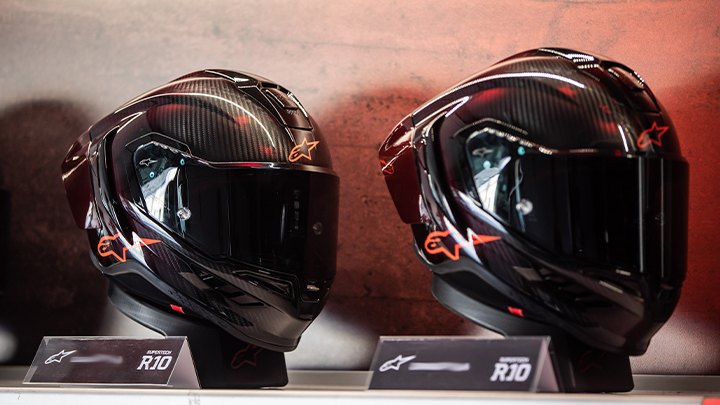



















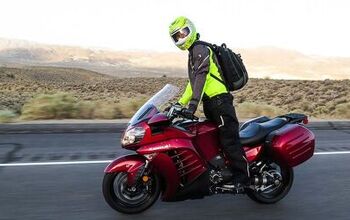
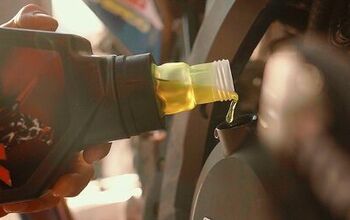
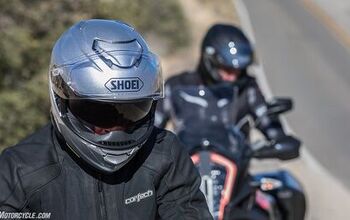



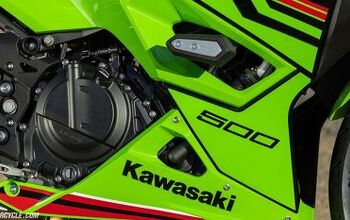











Comments
Join the conversation
I'd like to know how's the sound insulation is on this helmet, compared to shoei for instance since they're the quietest on the market (compared to most brands anyway)
OK, OK, I'll buy one. @revzilla